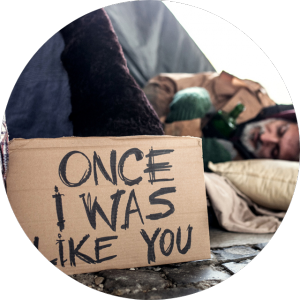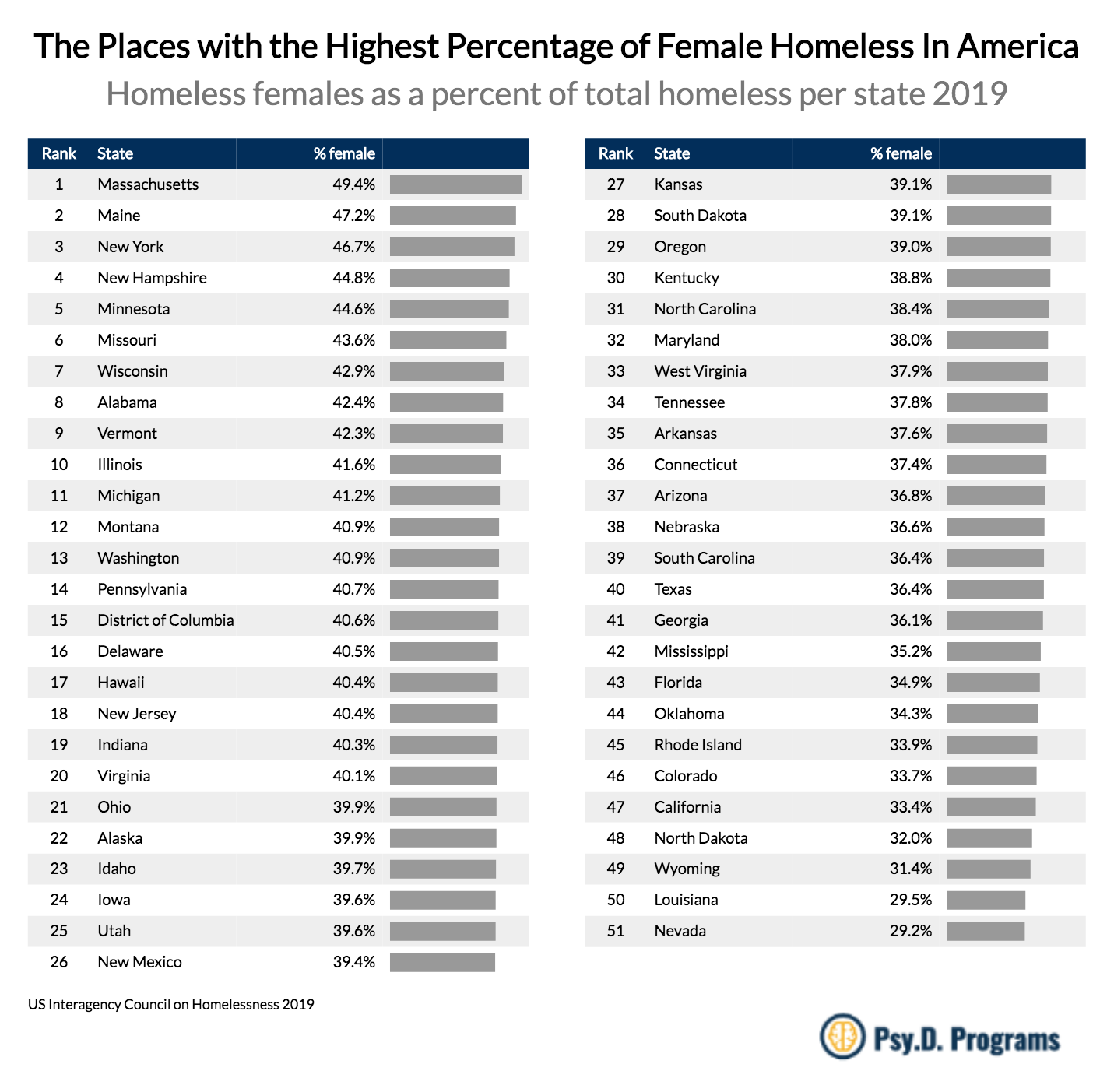
Reviewed on November 22nd, 2022 by Ann Steele
In many places in America, homelessness has become a full blown crisis. The psychological and physical impact of homelessness is a matter of public health concern.

Whether it’s related to rising housing costs, diminished mental health services, or increasingly addictive drugs, many people in the United States simply do not have a place to live and have little prospects of finding permanent shelter. Psychologists as clinicians, researchers, educators and advocates must expand and redouble their efforts to end homelessness.
And yet the news is not all bad everywhere. The number of homeless in America is 0.17% of the population, a percentage that’s comparable or lower than countries like England, France and the Netherlands. Not only that, but over the last decade, the number of homeless in America has been in decline.
The staff at PsyD Programs.org wanted to bring awareness to the problem so they analyzed the most recent data from the US Department of Housing and Urban Development (HUD) on homelessness across the country. Which cities and states have the highest rates of homelessness and which have the lowest. We found that on the state level, DC, New York and Hawaii have the highest homelessness rates while Mississippi, Louisiana, and Alabama have the lowest rates of homelessness.
We also looked at the homelessness rates by gender and among youth across the country.
***
Which states in America have the most and least homeless? The chart below shows the homelessness rate per every 100,000 residents that live in the state as of 2019:

By a significant margin, Washington DC has the highest homeless rate in the country. Part of this is because unlike any other state/territory we examined, the nation’s capital is entirely composed of a city (urban areas tend to have higher homelessness rates than rural or suburban environments). New York state (home of New York City) has the next highest homelessness rate. Hawaii and California, places with extremely high costs of living but more temperate weather, have the third and fourth highest homelessness rates.
Mississippi, Louisiana, and Alabama rank as having the lowest rates of homelessness in the country. Part of the reason for their success is each of these states have mostly rural populations, where homelessness is either less or more difficult to count than in cities.
In the United States, how does homelessness breakdown by gender? The chart below has the breakdown of homelessness by gender (male, female, transgender and gender-non conforming).

The overwhelming majority of the homeless population is male. Females make up 38.7% of the homeless across America. Which states have the highest and lowest rates of female homelessness?

Of the homeless in Massachusetts, 49.4% of them are female, the highest rate in the nation. All of the top 4 states with the highest proportion of female homeless are in the Northeast. Nevada, Louisiana, and Wyoming have the lowest percentage of homeless females among their homeless populations at around 30%.
HUD also tracks the rate of homelessness among youth across the country. The chart below shows the states based on the percentage of their homeless that are under the age of 18:

Massachusetts also has the highest percentage of its homeless population that are children. 39.8% of the homeless in Massachusetts are under the age of 18, rate that’s more than five times higher than in Nevada and California.
Lastly, which cities have the most homeless? HUD publishes data on homelessness counts “continuum of care” areas. Since these zones don’t correspond to traditional city or metro boundaries with population known overall population figures, we present the raw count data below (as opposed to per capita figures presented elsewhere that adjust for the population size):

Not surprisingly, the largest cities in America have the most homeless as well. New York City, the largest city in America also has the most homeless with over 78,000 being counted by HUD. Los Angeles, the second largest city in America, also has the second highest count of homeless population. San Francisco, a city known for its widening homelessness crisis, has almost 10 times fewer homeless people but has a much smaller overall population.
***
Homelessness in America is a crisis for anyone who finds themself without a place to live. And while overall homelessness has decreased along side the stronger economy of the last decade, in certain pockets the problem has become much worse.
Places with a high percentage of urban areas like Washington DC and New York have the highest homelessness rates in America. Additionally, the high costs of housing in places like California and Hawaii mean that many people cannot afford a permanent home there. And in New England, places like Massachusetts have the highest proportion of female and youth homeless. And while the United States has made a solid dent in tackling homelessness in America, the problem is still especially acute in cities like New York, Los Angeles, Seattle and San Francisco. There is still a long way to go in ensuring that all Americans have safe and secure homes.
Fair Use Statement
Information is power. Please share our content for editorial or discussion purposes. All we ask is that you link back to this page and give proper credit to our author.
Other Recent Features
- These Are the Best States in America for Mental Health Workers
- The Places in America Where Diabetes Rates are Increasing the Fastest
- The Places in America with the Best (and Worst) Hospitals
- Best Psy.D. Programs for 2022
About PsyDPrograms.org
PsydPrograms.org is the largest online psychology graduate community for students seeking PsyD degree programs, helping thousands of mental health career professional visitors each month. Over the past 10 years that we have been online, we have helped tens of thousands of readers make more informed decisions involving graduate psychology PsyD degree & career decisions.
Published on March 2nd, 2020.




